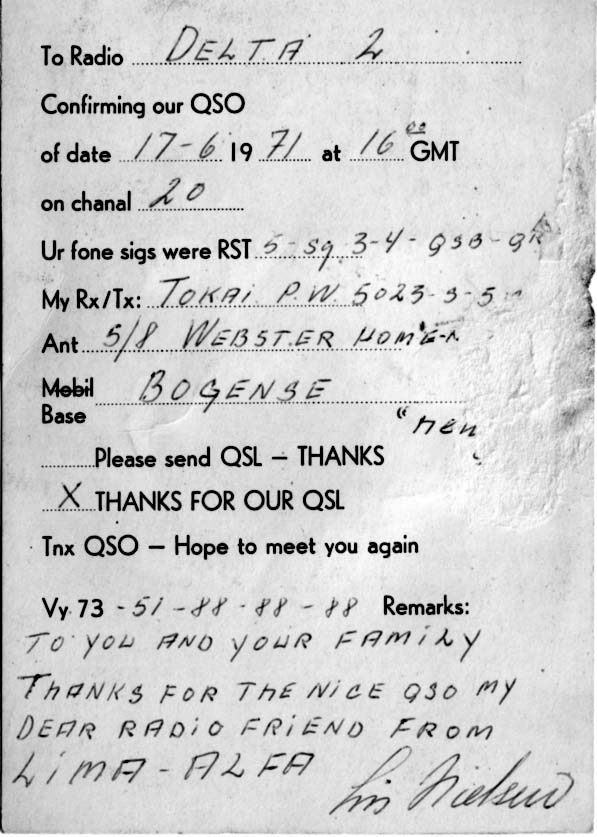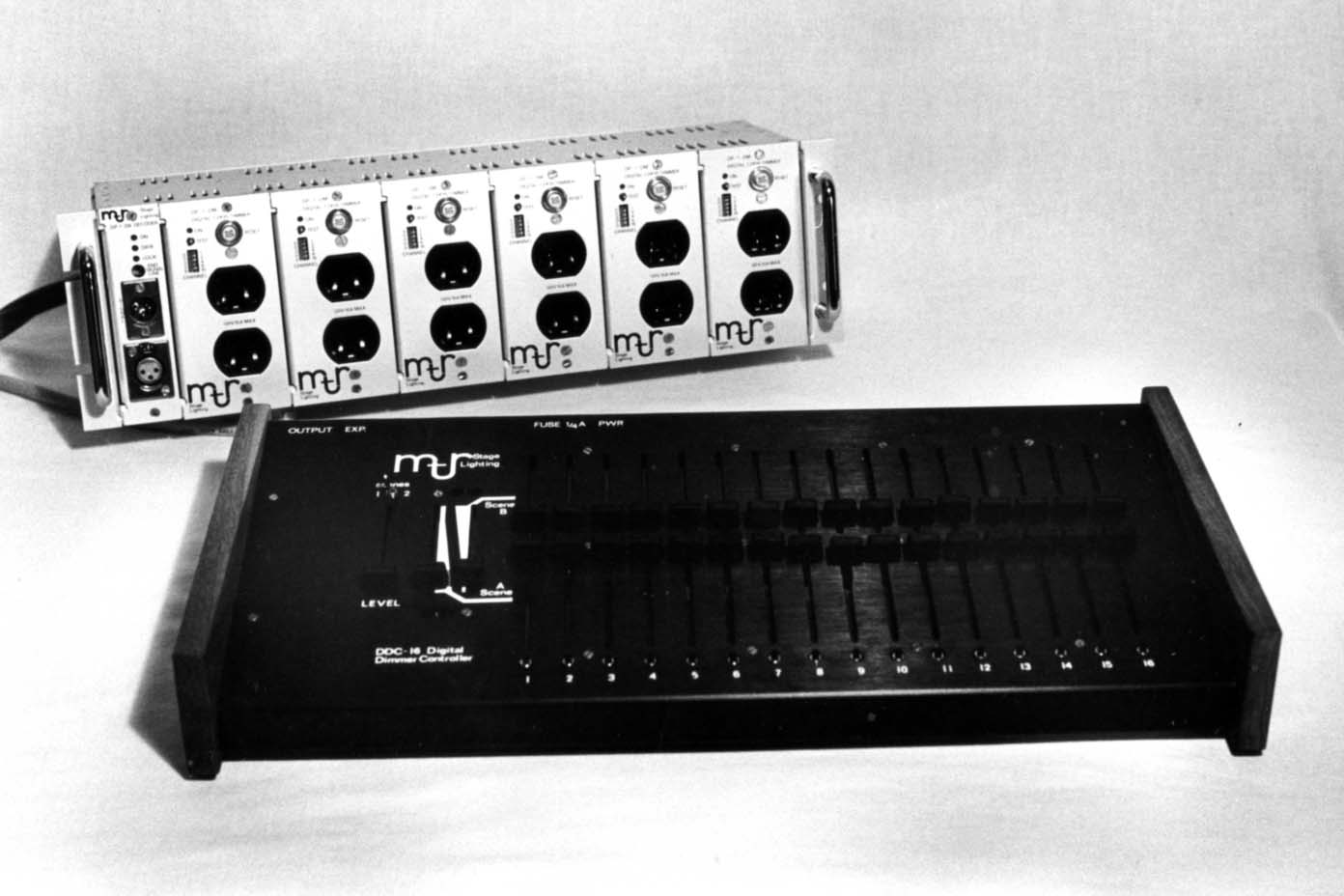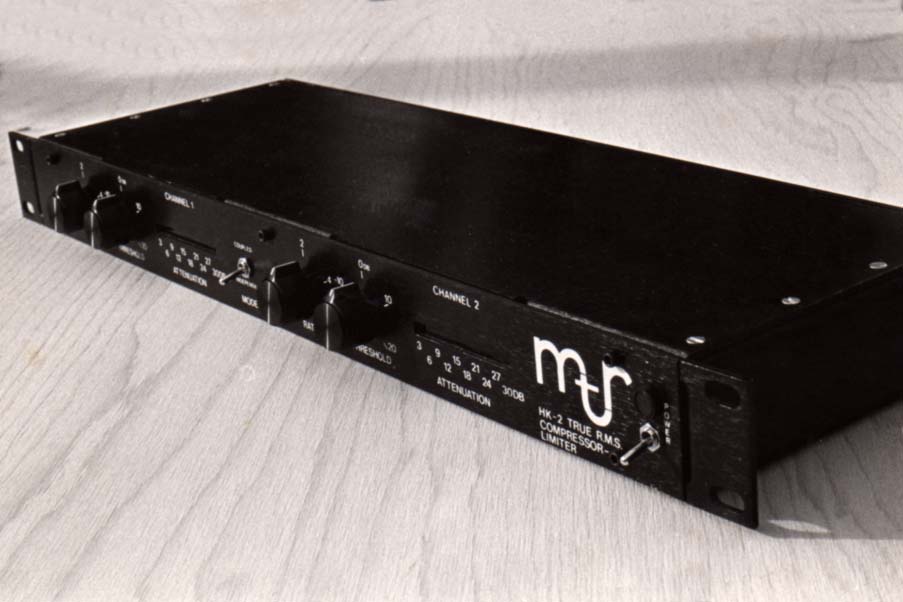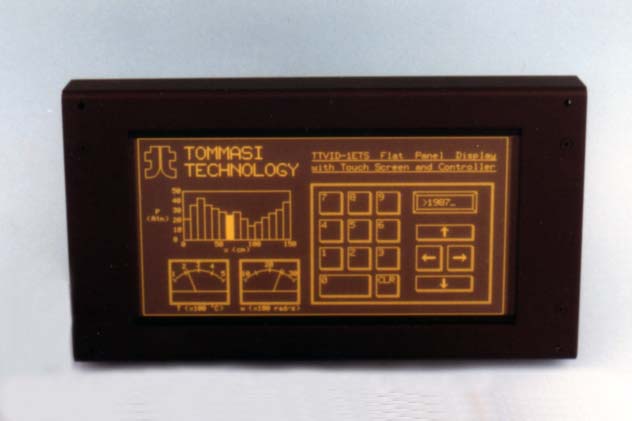At the risk of revealing my ageworthiness, please note that this page has been around since the early days of the web in the early 90's, when my internet provider was PacWan and modems were reaching the exhilarating speed of 33.6kbaud. Back then we were always running around with phone adapters for the 100 different phone plugs in use worldwide, and when we got the connection it was slow and expensive. Today things are not much different, we have 4G data that seems slow and... stunning data roaming charges.

My techie geek history begins in the '60s: I was always mechanically and mathematically minded, and at the age of six I remember figuring out the relation of the apothem of a polygon to its radius. I used to take things apart around the house. At a later age I made up for this by fixing things. In the late '60s in grade 5 I got the electronics bug from my best friend and sailing racing partner Andrea Pitacco in Venice, mostly building audio amplifiers, radio receivers and the occasional transmitter, plus the odd gadget. He actually did projects using valves, whereas I decided to skip that and go direct to transistors. In 1971 the sunspot activity was at a peak, causing incredible radio propagation at certain times of day, and I managed a 2-way contact with somebody in Denmark using a small 2W citizen band transceiver that normally would not carry beyond a few miles. My friend Andrea had a proper amateur radio license (I3JPA), but a license required being able to use Morse code, and I thought that life was too short for that. Eventually in 1994 I did learn Morse code and I got a French radioamateur license (F5UFL), and very occasionally I use my Icom IC-706 short wave transceiver. The most exotic thing I did in amateur radio was communicating using russian low-orbit amateur radio satellite RS-12, with uplink at 21MHz and downlink at 29 MHz.
In December 1971 I moved with my family to Canada; at the time, digital chips (TTL, CMOS) were becoming available, so I took on digital electronics. I got a summer job repairing TVs. In order to play the high school dances as a DJ with my friends Larry Beauregard, Phil Bedard and Jack Morawski, I built a powerful audio amplifier from scratch, plus I built a replica of the Altec Lansing A7 concert speakers, two enormous black things that, when not used for dances, I kept in... my parent's living room. My dog used to sleep in the bass port. While in high school, my friend Larry Beauregard and I got kicked out of class with an A by our physics superteacher Nish Mukerji "because we already knew all the physics", so we went off to figure out the coding of the Montreal Metro tickets, and built a special punch to manufacture them on the spot. Larry was a formidable flute player, and I developed some experiments in electronic music, using the flute as input device. In 1975 I did a lot of research into a direct Fourier generator for a polyphonic music synthesizer, but it was a huge project and I could not afford to build it. One of the options for the synth was that it could generate scales other than the standard 12-note chromatic scale, including 19 and 31-tone equally tempered scales. Larry even tried to get me involved with IRCAM in Paris, but it did not happen.
Larry Beauregard became first flute for Pierre Boulez's EIC orchestra in Paris around 1980, and lived a perfectly healthy life until he suddenly got colon cancer and died in 1985, age 28. In the same year Nish Mukerji decided to visit his native India with his family, and boarded Air India flight 182, which exploded over the Atlantic due to a bomb placed by Sikh terrorists.

In the mid '70s, while studying electrical engineering at McGill University, I developed a device for generating sound effects in cinemas. It was the time of the Universal Studios disaster movies like Earthquake, Airport, Midway and Rollercoaster, which all used the Sensurround system developed by Cerwin Vega, which was triggered by a special optical track on the film. When Towering Inferno was released by 20th Century Fox and Warner Bros., without any special sound effects, a Sicilian guy who owned 20 movie theatres in Montreal somehow found out about me and asked me to develop a machine to generate deep bass rumbling sounds in response to certain bass notes in the soundtrack of the movie. Because cinema owners had to pay a lot of money for the right to use Sensurround on the Universal Studios movies, he also wanted to use the same system on those movies. I had to work fast, he was paying me what then seemed to me like a lot of money, and he would call me often, saying things like "Hey Mike, eef eet no work I keeell you"; the device worked surprisingly well and I made hundreds of them. In the mean time he started procedures to patent my invention, and I obtained Canadian patent 1003759 in 1977.
Around 1976 I also developed a line of stage lighting electronics that was fairly successful. We had a little production line going in the basement, and Cathy did a lot of the soldering with me. The innovation consisted in using common microphone cables (balanced, screened, with DIN connectors) as a serial interface between the console and the remote modular power units. Here is a photo of the device. It was used by dozens of bands in the Montreal area. After 6 years I began seeing exact copies of my design appearing on the scene!
The tools available back then were basic. I was making all my printed circuits by hand, using red and blue translucid tapes and black pads on sheets of mylar stretched on a drafting table; I would carry these by bicycle to the circuit board manufacturers. Microprocessors were not yet available, so all logic had to be designed in hardware, using TTL or CMOS chips.

In 1979 I thought it was time to move on to microprocessors as a way to accelerate my electronics projects. I looked at Intel's 8080 microprocessor, but decided it was too crude, so I opted for the 6809 processor by Motorola. I developed many circuits around the 6809, including several systems for industrial control; I also designed and sold an educational computer to teach about microprocessors, plus I designed and built my own first personal computer in 1979 with a 5.25" floppy drive, running the Flex operating system. The 6809 was almost as powerful as the PDP-11 I was using at McGill University, and much better than the 6502 used by in the Atari machin, the Apple IIe and the Commodore 64. I ported the "troff" document processing system to Flex, so I was actually able to do some fancy word processing on my 6809, years before WordPerfect (1982 on DOS) or Word (1983 on DOS). As complex as it was to use, in 1983 my future wife Cathy did some of her art history papers using troff, only to have them rejected for having been printed on a dot-matrix printer! Since retyping these texts by hand seemed totally illogical, I spent much of my savings on the recently released Olivetti Praxis 20 electronic typewriter, and I designed a parallel interface to connect it to my computers (high quality printers back then ran into the thousands of dollars): the faculty never realised it was typewritten by our computer!

In 1980 I turned my interests back to audio, and professional audio in particular: I designed a RMS compressor-limiter for use in recording studios, an improvement on the DBX 160 using Aphex VCAs (I still have a working one here at home). The pro audio world turned out, to my immense disappointment, to be a world of knob-obsessed tone-deaf male wankers who knew all the equipment specs by heart and would not touch any equipment that was not reviewed in the audioporn mags... ;-) The HK-2 compressor, designed with my friend Harold Knowles, is shown in the photo. We did get into some local recording studios, bands, and even at Sunset Studios in Los Angeles. Some people appreciated it. For years I remained a member of the Audio Engineering Society.
In 1981 I bought the original IBM PC as soon as it was released for sale; it was based on (horror!) the old 8080 processor, complete with 5.25" floppy disc drives running PC DOS. It really was not nearly as good as my home-made 6809. When the IBM XT came out I could not afford it because of the outrageous price of the 10M (!) hard disk (smaller than today's USB keys).
In 1983 I finally got married to Cathy and we had a great party in her artist's loft. In 1985 Anthony was born.
In 1985, after the terrible experience of buying the original IBM PC, I switched to the IBM AT, with its then massive 20M disk and PC DOS 3.0, and at that point I switched completely to PC. By then the world of PCs had developed a huge amount of engineering software. Even though the MacIntosh looked nicer and was easier to use, it remained marginal (and still is marginal today), and for an engineer it really only makes sense to use a PC. The best known schematics design software was called OrCAD; it was very expensive, so I pirated the dongle, using PALs (programmable array logic). But PCB design software was prohibitevely expensive and yet crude. Back then my favorite word processor was Word Perfect, until they release a big fat update that turned everybody off and forced me to move to the hated Microsoft Word.

In 1985, I completed the world's first complete touch-sensitive 8.9" 640x400 flat panel display and terminal. I began developing touch screens in 1983. Take a look at the picture, basically it is an Ipad 15 years ahead of its time, with slightly lower resolution: ok it was monochrome, and it was 2 inches thick: iBrick? But it was completely waterproof (try dropping iPad in a puddle!) See photo. In 1986, with the newly introduced MacIntosh not even making a dent on the PC market (it was incredibly expensive and engineering software was never ported to MacIntosh), Steve Jobs was fired from Apple by Sculley, who led Apple into a decade of total irrelevance and very close to bankruptcy, only to be saved at the last moment by the return of Steve Jobs and the iMac in 1998. Meanwhile I was struggling like mad trying to peddle my touch sensitive flat panel display to people who just could not grasp why you would ever want to put your fingers on a screen and use it as a keyboard, nor could they understand why you would want to install it directly on the factory floor in a harsh environment, the fact that it was IP67 waterproof seemed to them a crazy luxury. When I explained that you could change the keys right on the screen according to context, and if it got dirty you could hose it down, they looked at me as if I were completely mad. The only company that did decide to use it was Thermo Electron, in Auburn, MA, for their pulp and paper machine controls.

In 1988 I moved back to Europe and settled in coastal Provence with the family and worked for a few years doing business development for a Swiss electronics firm. They had bought all my touch screen designs and continued manufacturing them. This was my first experience working purely on the business side of electronics. However I never abandoned the technical side and kept up with the times by reading.
In 1994, despite the aversion to "audio people" that resulted from the audio compressor experience, I decided to get back into audio, this time in high end home audio. The catalyst was my discovery of Dynaudio, a Danish company that in those days sold extremely high quality loudspeaker motors (unfortunately now they make complete speaker cabinets and no longer sell the components). I was most impressed with the fact that they tested their speakers with bursts at 10 times their full rated power, to make sure that there was no compression: these were very low distortion devices! Meanwhile I had noticed that acoustic glass laminates had peculiar characteristics that seemed interesting for speaker cabinets. I designed a fully transparent speaker cabinet with remarkable audio quality; I still have the prototypes in my living room! I visited several high end audio stores, the kind that sell speakers for $100,000 each, swear by valve amplifiers and sell 0 gauge welding cable as speaker wire at $300/foot. Without exception, in Marseille, Paris, Lyon and Toulon, they all refused to even attend a demonstration because "a glass speaker cannot be high quality" and they knew their customers would be ideologically against the idea. Coincidentally, in 1996 a company a few miles from where I live copied my design.
in 1996 Alessandra was born. From 1995 to 2009 I concentrated my efforts on business development, mainly for US companies in electronics and telecommunications looking for new markets in Europe and the Middle East. Around 2010 the electronics bug reinfected me, mainly thanks to my meeting Gerald Augustoni, a brilliant engineer with an attitude toward electronics engineering very similar to mine: driven by a fearless search for innovation, and sceptical about standard engineering practice.
More recently, I teamed up with another brilliant engineer, Alain Bailly, and formed a team to participate in Google's million dollar Little Box Challenge. We seemed to have the required "healthy disregard for the perceived limits of engineering". We have just found out that we have been selected for the finals!